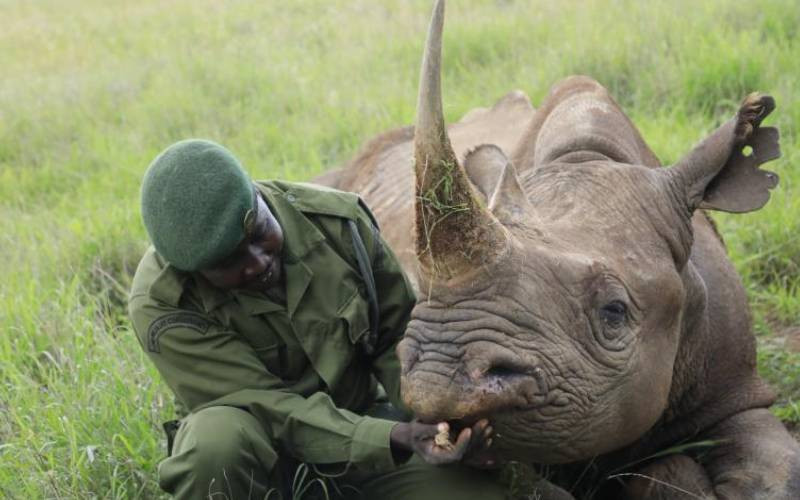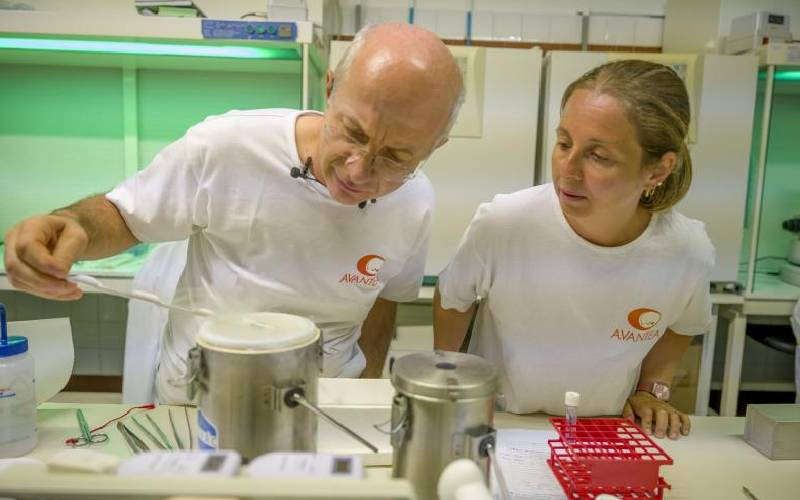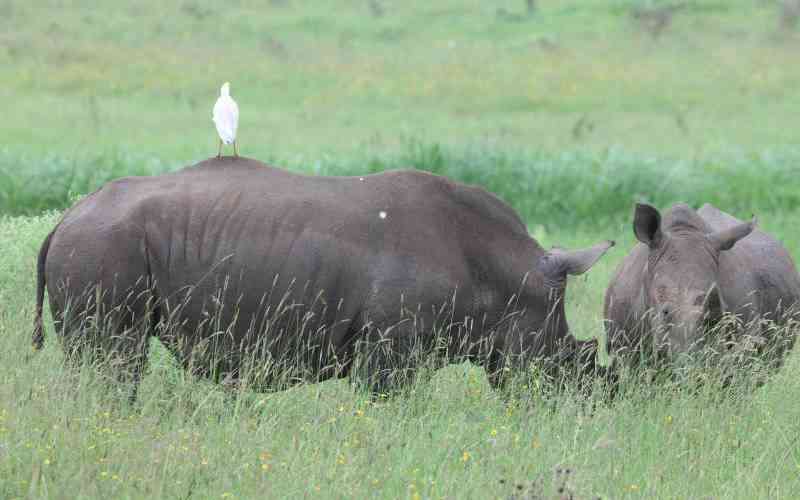By Lydia Limbe
The drive to Rhino Watch Safari Lodge is a silent one, until we stop at Karatina to buy fruits. It is amazing how the women selling their wares swarm the car, selling bananas, avocadoes, oranges, and mangoes.
The fruits are not only cheap and fresh, but also available on credit so long as you are a familiar face on the route. The traders would rather sell the produce on credit than hold on to it and risk it going bad, I am told.
We resume our trip, and when we get to Nyeri, our driver shows us former President Kibaki’s Othaya home.
Rhino Watch Safari Lodge is along the road, and we arrive just in time for lunch. We check in quickly, worried that, from the look of the clouds, it might rain, and ruin chances of a game drive at Solio Ranch.
We grab a quick lunch then leave for the game drive. By now, the temperature has dropped considerably, and we need shukas to keep ourselves warm.
Solio Ranch is a private property that recently opened its doors to the public. Some parts are dry and dusty, while others are lush and green.
We see rhinos of different sizes, and our tour guide, Ben, tells us how organised these animals are.
Intrusive Creatures
“Rhinos have a designated area to relieve themselves. Once they’ve chosen a spot, they all go there as a family. Even if they are far away, they will always trek back to their spot to relieve themselves. Each family unit has its designated spot,” Ben says.
And we see plenty of them (rhinos and their ‘bathroom’ spots). They are a bit jittery at our presence, probably wondering what to make of these intrusive creatures, or so I think.
Afterwards, we find a herd of buffalo, then a watering hole full of waterbucks, impalas and zebras. They seem oblivious of our presence, but we are not allowed to move away from the path, so we watch them from a distance.
Shy Animals
One of us sees what he thinks is a leopard jumping from a tree, and we drive around looking for the shy creature. Instead, we see a family of lions — a lioness, two cubs and a male. They scamper away when they spot us.
As we drive off, Ben makes an announcement: “I can smell a cat!”
Stay informed. Subscribe to our newsletter
“Where?” we respond in unison.
“I can smell a cat,” Ben repeats knowingly.
We are crackling with excitement. But when the guide points the animal out, our untrained eyes do not see it. Then Ben drives closer and we see a cheetah, lying on the ground, its stomach bulging.
We stop and it raises its head. For a moment, we think it will get up and run, but it just sits there contentedly. It is a photo opportunity that we would not even have dared to dream of.
On our way out of the conservancy, we come across the buffaloes we passed earlier. They are grazing on both sides of the road.
It is a little intimidating to see them up close, looking menacing and ready to charge at any moment. I can see their noses twitching from trying to smell us — their way of making sense of their surroundings. When we get back to the lodge, I am feeling queasy and cannot hold down any food. Perhaps it is because of the different climate, I think; it is so cold that all I want to do is curl up and sleep.
The staff are far from cold though; they keep coming to check on me.
It is warmer in the morning, and I am feeling better as we sit down to have breakfast.
While we enjoy our meal, my colleague, Wilberforce, is on the deck of the Rhino Bar, hoping to take a photo of Mt Kenya.
We join him, and spend two hours chatting as we wait for the clouds to clear. By noon, there is no sign of blue skies, so we give up and head back to Nairobi.
 The Standard Group Plc is a
multi-media organization with investments in media platforms spanning newspaper
print operations, television, radio broadcasting, digital and online services. The
Standard Group is recognized as a leading multi-media house in Kenya with a key
influence in matters of national and international interest.
The Standard Group Plc is a
multi-media organization with investments in media platforms spanning newspaper
print operations, television, radio broadcasting, digital and online services. The
Standard Group is recognized as a leading multi-media house in Kenya with a key
influence in matters of national and international interest.
 The Standard Group Plc is a
multi-media organization with investments in media platforms spanning newspaper
print operations, television, radio broadcasting, digital and online services. The
Standard Group is recognized as a leading multi-media house in Kenya with a key
influence in matters of national and international interest.
The Standard Group Plc is a
multi-media organization with investments in media platforms spanning newspaper
print operations, television, radio broadcasting, digital and online services. The
Standard Group is recognized as a leading multi-media house in Kenya with a key
influence in matters of national and international interest.








